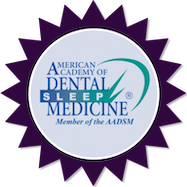Symptoms and Causes of TMJ Disorder (TMD)
Temporomandibular joint disorder, commonly referred to as TMD, is pain experienced in your jaw. While it might seem like an easy condition to diagnose, it really isn’t. That is because most doctors have a less than clear understanding of the causes and symptoms affecting TMD and the surrounding muscles. For this reason, most health care professionals are often hesitant to make a diagnosis unless they have completed advanced training and know for sure. To help, there are some clear signs and causes you should be on the lookout for. Here is what you should be looking for.
The Symptoms of TMJ Disorder
Similar to how craniofacial pain can mimic other conditions, so can TMD. This causes difficulty in finding a diagnosis or solution. Often, we see individuals diagnosed with other conditions and the treatment doesn’t provide relief. We know that is frustrating. Some of those symptoms that can mimic the characteristics of TMD include:
- Toothache.
- Sinus infection.
- Ear infection.
- Facial neuralgias.
- Myofascial pain.
- Headaches.

When pain in the jaw occurs, we will perform tests to rule out or confirm TMD or any other underlying condition.
The Causes of TMJ Disorder
You can develop this condition with or without the risk factors we list below. But the odds of you developing TMD increases with the more risk factors that are present. If you do find that you meet some of these risk factors, it is important to reach out to Dr. Fuller to learn how to improve your condition and reduce your chances of developing further harm.
One risk factor that can lead to TMD is stress. Do you find that you are under a lot of stress in your life? If you are, then you may have an increased risk of TMD. That is because stress-related habits can increase that risk. Those habits include clenching and unclenching your jaw, grinding your teeth throughout the day or while you sleep, and constantly chewing on things.
Your medical conditions can also put you at further risk. Some of those conditions include a misaligned bite, jaw or facial deformities, arthritic conditions and history of jaw or facial injuries. To add to this risk, if you are a woman, you are also at an increased risk. While both men and women suffer from TMD, women actually account for about 90% of those that seek treatment.
As you get older, your age plays a role too. Those who are most likely to develop TMD are between the ages of 30 and 50. However, this does not always mean that a person will develop TMD. It just means they are more likely to.
Lastly, if you have experienced trauma or injury to the jaw area, it can translate to long-term issues. TMD can develop it an injury causes dislocation of the jaw joint or movement of the disc. And if the muscle used for opening and closing the jaw is weakened or strained, it can add to the condition too.
Contact us at Fuller Sleep & TMJ Solutions for more information on TMD and how you can take charge of your pain.
Contact Us Today
Our Hours:
Monday: 8am-5pm
Tuesday: 8am-5pm
Wednesday: 8am-5pm
Thursday: 8am-2pm



